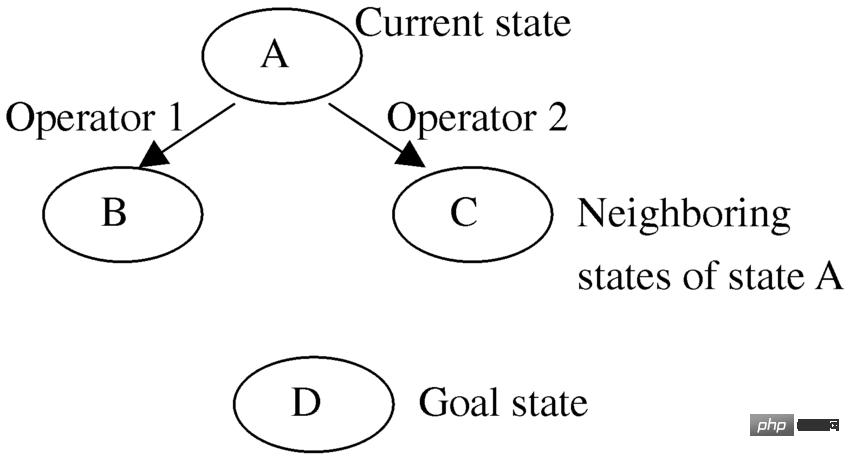
In addition to logic theory and general problem solvers, symbolism has also contributed to us a series of excellent technologies such as expert systems, knowledge bases and knowledge graphs. It has developed a lot and influenced the development of many fields.
With the popularity of ChatGPT, artificial intelligence has triggered another wave of craze in the industry. Today we will talk about the development process of artificial intelligence.
Artificial intelligence, as it is generally thought, originated from the DARTMOUTH conference in 1956, at which researchers proposed the concept of artificial intelligence (Artificial Intelligence). But in fact, artificial intelligence had already begun to develop before that. In 1955, the Western Computer Federation Conference was held in Los Angeles, which included a Session on Learning Machine.
At the meeting, Allen Newell, a representative of the artificial intelligence symbolism school, participated in the discussion.

Allen Newell (March 19, 1927 - July 19, 1992)
Symbolism and Connectionism, Behaviorism (Actionism) is the three mainstream schools of artificial intelligence.
Symbolism is also known as Logicism, Psychologism or Computerism. Its main point is to use physical symbol systems and limited rationality principles to realize artificial intelligence. .
Specifically, symbolism believes that the basic unit of human thinking is symbols, and a series of operations based on symbols constitute the cognitive process, so both humans and computers can be regarded as capable of logical reasoning. Symbol system, in other words, computers can simulate human "intelligence" through various symbolic operations.
In late 1955, Newell and Simon developed a program called LOGIC THEORIST. This program is considered by many to be the first AI program. It represents each problem as a tree model, and then selects the branch that is most likely to get the correct conclusion to solve the problem. The program could prove 38 mathematical theorems in Principia Mathematica (later proved all 52 theorems), and some solutions were even more clever than those provided by human mathematicians.
In 1957, Herbert Simon, J.C. Shaw, Allen Newell and others introduced the General Problem Solver (GPS) reasoning architecture and heuristic search ideas. This idea has far-reaching influence. AlphaGO, which was very popular this year and defeated Ke Jie, borrowed this idea.
Universal problem solver can solve many common sense problems. Two years after the program was launched, IBM established an AI research group to study similar problems.

#GPS is the world's first program that attempts to solve all general problems. It is designed to solve all problems that can be described using basic algorithms. To this end, researchers also created a programming language Information Processing Language (IPL) specifically for it. The prerequisite for using this procedure is that the problem can be expressed in a set of regular formulas. These formulas can be part of a directed graph with multiple sources and sinks. The source represents the starting node and the sink represents the ending node. In GPS, sources represent axioms and sinks represent conclusions.
Despite the lofty ideals of developers, in fact GPS can only be used to solve well-defined problems, such as math problems, geometry problems, or board games. Because these problems can be formalized to an acceptable level. In the real world, possibilities have exploded, and quickly traversing all possibilities has become a problem that exceeds computing power.
The steps to use GPS to solve general problems are as follows:
1. Define the goal, such as going to the store to buy a box of milk.
2. Define prerequisites. These prerequisites should be related to the goal. For example, if you want to buy milk, you need to have a path to the store, and the store also needs to sell milk.
3. On this basis, we can define the operation process. For example, if we need to drive to the store and the car is out of gas, then we need to make sure that we have money to refuel, and that we still have money to buy milk after refueling.
An operation process can handle all situations based on conditions . It consists of behavior, preconditions, and changes resulting from the behavior. In the previous example, the behavior involved paying money to the store, and paying money required having money in hand. The act of paying changes the status of the money and obtains milk.
GPS can solve all similar problems, but because it achieves this goal by traversing all possible processes, in the real world, the complexity of the problem often exceeds the computing power.
In addition to logic theory and general problem solvers, symbolism has also contributed to us a series of excellent technologies such as expert systems, knowledge bases and knowledge graphs. It has developed a lot and influenced the development of many fields.
The above is the detailed content of The Origin and Symbolism of Artificial Intelligence. For more information, please follow other related articles on the PHP Chinese website!
 Application of artificial intelligence in life
Application of artificial intelligence in life What is the basic concept of artificial intelligence
What is the basic concept of artificial intelligence Recommended order for learning c++ and c language
Recommended order for learning c++ and c language How to open ai format in windows
How to open ai format in windows How to solve the problem that tomcat cannot display the page
How to solve the problem that tomcat cannot display the page Usage of Type keyword in Go
Usage of Type keyword in Go Word document encryption tutorial
Word document encryption tutorial What is LAN
What is LAN



